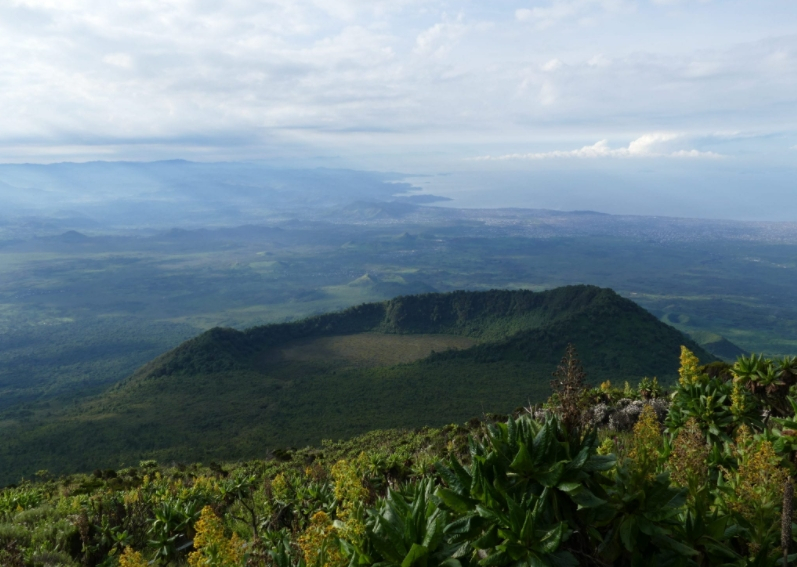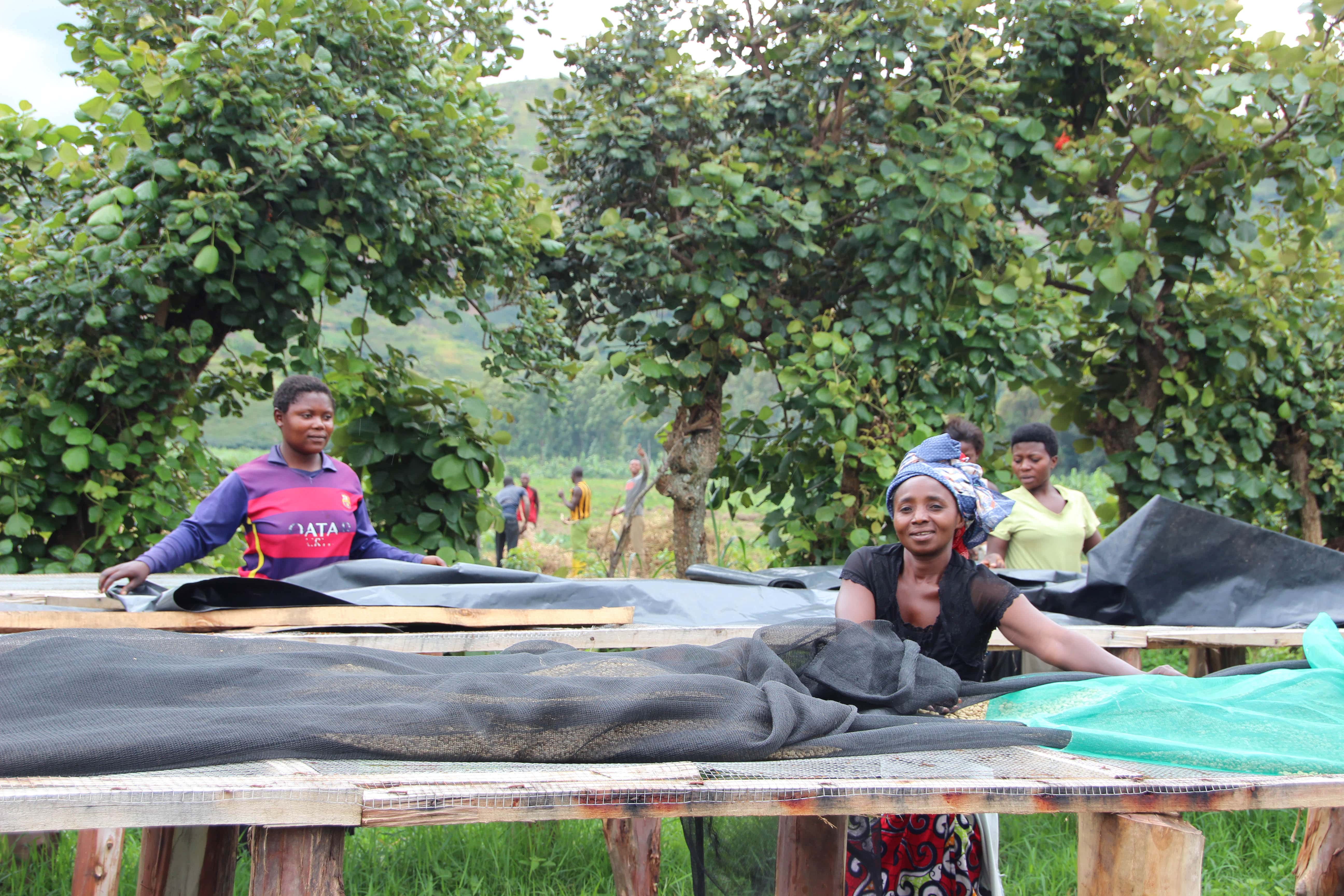Congo (Democratic Republic of)
Did you know?
About...
The Democratic Republic of Congo, in Central Africa, it is the second largest country in Africa, and it is 8 times the size of France - making it the largest francophone country with 78 million people.
The Democratic Republic of Congo is located at the equator, experiencing a tropical climate and rainforest. The Congo River runs across D.R.C and it is the second largest river in Africa after the Nile. The Rift Valley shapes Congo, with high mountains to the East - the Virunga and the all set of still active volcanos. Congo is also extremely wealthy in all kinds of minerals
D.R.C is extremely rich in natural resources of all sorts, unfortunately it is plagued by civil war, political instability and poverty.
Arabica 60%, Robusta 40%
The tropical climate, fertile soil and abundancy of rain provide ideal conditions for the cultivation of both Arabica and Robusta. Arabica grows mostly on the highlands of the east part of Congo above 1500 meters over rich volcanic soil. Robusta is also endemic to the country and is produced mostly on the North East of Congo. Due to its ideal geographic conditions Congo can produce very high quality Arabicas and Robustas. The country is considered one of new jewels in the specialty coffee world.
Coffee facts
Bags of 60 Kg
Crop periods
Flowering period
Main : from May until July
| North |
begins in May |
|
East |
begins in June |
|
South |
begins in October |
Harvest period
|
|
Main crop |
Secondary crop |
|
North-Kivu |
From August until November |
From February until May |
|
South-Kivu |
From May until September |
From August until November |
Shipping period
All year round
Transit Days
|
Port of Shipment |
Imp. |
EU |
US |
|
Dar-Es-Salaam (1) |
30% |
21 |
40 |
|
Mombasa (2) |
70% |
21 |
40 |
(1) About Dar-Es-Salaam
For regions of production using Dar-Es-Salaam as principal port of export, coffee is transported by truck (or on barges across lake Kivu) to Uvira, then across the lake to Kigoma and finally by rail to Dar-Es-Salaam.
(2) About Mombasa
Coffees produced in the extreme northeast and the Kivu regions are transported by truck to Mombasa via Uganda or Rwanda.
Destination countries
Italy, Belgium, Switzerland, France, Germany, USA, Scandinavia
ICO Figures
Classifications
Varieties
|
Arabica |
Blue Mountain | Local Bronze | Rumangabo | Kabare | Maragogype | Bourbon | Jackson | Catura | Typica |Amarela |Mibirizi |
|
Robusta |
Canephora, Petit Kwilu |
By region
|
Arabica |
North-Kivu South-Kivu |
|
Robusta |
Eastern Province Equateur Province Bandundo Province |
By grade
Arabica Washed
|
K 3 |
KIVU 3 |
Fully Washed |
|
K 4 |
KIVU 4 |
Semi-washed |
|
K 5 |
KIVU 5 |
Fully washed triage |
|
K 6 |
KIVU 6 |
Semi-washed triage |
Robusta Washed
|
HTM / W / M |
Hors Type Marchand Washed Moyen |
|
HTM / W / I |
Hors Type Marchand Washed Inferior |
Robusta Naturals
|
HTM / N / M |
Hors Type Marchand Natural Moyen |
|
HTM / N / I |
Hors Type Marchand Natural Inferior |
|
HTC / M |
Hors Type Courant Moyen |
|
HTC / I |
Hors Type Courant Inferior |
By screensize
Arabica Washed
|
K 3 |
KIVU 3 |
15+ |
54 % milled over screen 17 |
|
K 4 |
KIVU 4 |
15+ |
54 % milled over screen 17 |
|
K 5 |
KIVU 5 |
12-16 |
54 % milled over screen 17 |
|
K 6 |
KIVU 6 |
12-16 |
Robusta Washed
|
HTM / W / M |
Hors Type Marchand Washed Moyen |
screen 15 | 30 / 45% over screen 17 40 / 50% over screen 15 Remainder passing screen 15 |
|
HTM / W / I |
Hors Type Marchand Washed Inferior |
screen 15 | 30 / 45% over screen 17 40 / 50% over screen 15 Remainder passing screen 15 |
Robusta Naturals
|
HTM / N / M |
Hors Type Marchand Natural Moyen |
screen 15 | 30 / 45% over screen 17 40 / 50% over screen 15 Remainder passing screen 15 |
|
HTM / N / I |
Hors Type Marchand Natural Inferior |
screen 15 | 30 / 45% over screen 17 40 / 50% over screen 15 Remainder passing screen 15 |
|
HTC / M |
Hors Type Courant Moyen | screen 15 | 30 / 45% over screen 17 40 / 50% over screen 15 Remainder passing screen 15 |
|
HTC / I |
Hors Type Courant Inferior |
screen 15 |
30 / 45% over screen 17 |
By defect
|
K 3 |
KIVU 3 |
less than 6% |
|
K 4 |
KIVU 4 |
max 10% |
|
K 5 |
KIVU 5 |
depending on preparation |
|
K 6 |
KIVU 6 |
depending on preparation |
Robusta Washed
Cupprofile
Arabica
|
K 3 |
KIVU 3 |
Highly acidic Heavy round body Sweet, black tea, dark chocolate, fine herbal, honey |
|
K 4 |
KIVU 4 |
Medium acidity Heavy bodied Floral, red fruited, tea |
Robusta
|
Congo NM |
Natural Moyen |
Dark chocolate Caramel Hazelnuts Very heavy body |
Processing
Processing
|
Picking |
Handpicking |
|
Washing |
Arabica, can be fully washed, semi-washed or Natural processed (*) |
|
Fermentation |
Depending if it is a washing or natural process (*) |
|
Drying |
Most of the coffee in Congo dries naturally in the sun (*) |
|
Sorting |
By hand to eliminate the biggest defects such as cherries |
About Washing
Arabicas can be fully washed, semi-washed or Natural processed.
- Fully Wash process:. Mature red cherries are brought to Washing Stations, there the coffee cherry's are mechanically pulped. The parchment then, travels through a system of water channels, during several stages of the fermentation and washing process,it is ready to dry.
- Semi Wash process: Mature red cherries are pulped and washed at the farms, using manual pulpers. Secondly the parchment dries on patios (plastic foils laid on the ground)
About fermentation
Depending if it is a washing or natural process, the controlled fermentation process can be of various forms.
- Fully wash process: the parchment ferments for several hours at soaking tanking (or fermentation tanks) before it goes to dry.
- Semi-wash: the parchments ferments naturally after pulping and while drying.
- Natural: in this case there is not really fermentation, they coffee seed rests in the cherry during drying.
About Drying
Most of the coffee in Congo dries naturally in the sun, for days in a row (typically 10 to 20 days in case ), over patios or on African beds.
There are also mechanical driers being used to a lesser extent.
Coffee Environment
About exporters
The coffee sector in Congo has proved its resilience throughout the history - coffee kept being exported throughout turbulent period and civil wars. With a production volume of around 11280 MT (188000 60 kgs bags, 54% arabica, 46% robusta), the coffee production in Congo is only a mere fraction of the country potential (95 000MT exported in 1992).
Congo remains a country in conflict, with different rebellion groups in the Kivu regions obstructing free coffee movement. Infrastructure is poor and most roads unpaved. Despite it all, there is a surge in the Congolese coffee scene, there is a higher focus on quality, arabicas are better processed thanks to the proliferation of washing stations and micro-washing stations - often funded by International organizations. The North and South Kivu regions are capable of producing fresh coffee all year round and position themselves as a contender for quality at still reasonable price versus neighbor countries or even Central American producers. We start seeing Congo arabica microlots winning specialty competitions, from fully washed to naturals and Honey processed. The focus on specialty might be the breakthrough that Congo coffee needs in order to proof itself as solid producer of quality coffees.


